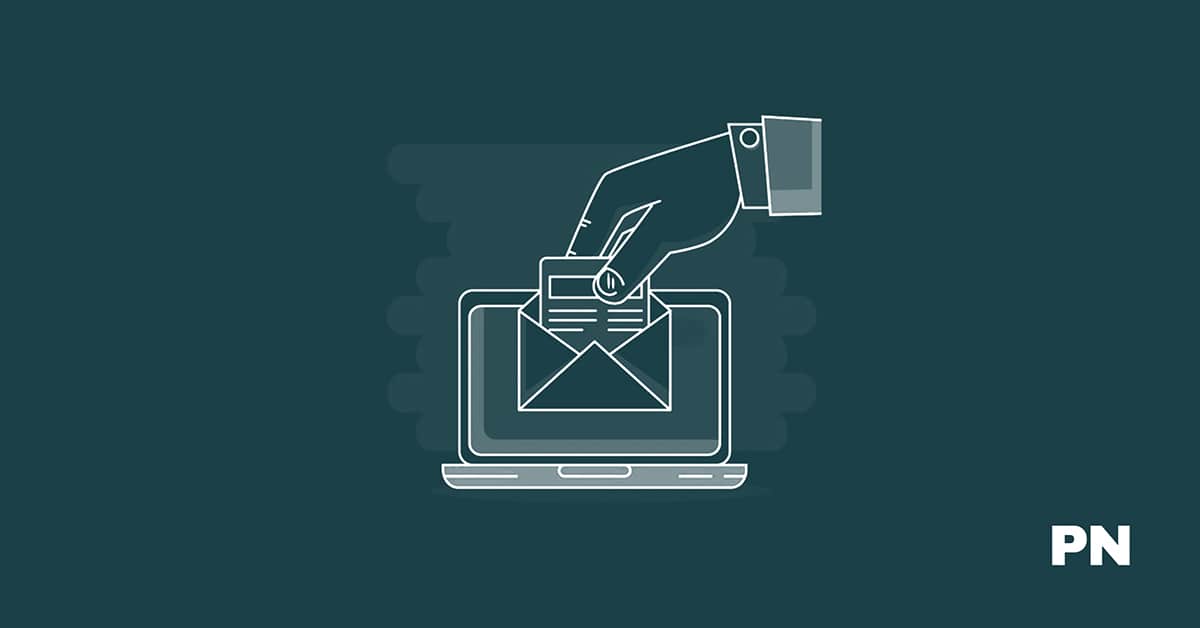41+ Helpful Direct Mail Marketing Statistics You Should Know

Did you know that direct mail marketing has an average success rate of 31.49%?
Direct mail has an average response rate of 4.4% compared to email marketing, while email has only 0.12%.
With the global direct mail advertising industry expected to grow to $84.7 billion by 2027, direct mail marketing is still valuable for businesses looking to reach their target audience.
Direct mail marketing has existed for decades but is still a vital marketing strategy. Find out more helpful insights on how to use this strategy in 2024.
1. The average response rate for direct mail is 4.4%, compared to 0.12% for email.
(Source: DMA)
Direct mail marketing has been a popular advertising method for decades, and for good reason.
One reason direct mail has a higher response rate is that it is a more personal form of advertising.
When someone receives mail addressed specifically to them, it feels more personal and important than an email that can be easily deleted or ignored.
Additionally, direct mail allows for more creative and eye-catching designs that grab the recipient’s attention and make them more likely to respond.
It is important to note that the response rate for direct mail can vary depending on the target audience and the quality of the mailing list.
For example, a mailing list carefully targeted to a specific demographic will likely have a higher response rate than a generic list.
Similarly, a well-designed and personalized piece of mail is more likely to generate a response than a generic postcard.
2. The global direct mail advertising industry increased from $74.6 billion in 2022 to $76.9 billion in 2023, with a compound annual growth rate (CAGR) of over 3%.
(Source: PR Newswire)
Direct mail advertising is a form of marketing in which promotional materials such as flyers, brochures, and postcards are sent directly to potential customers.
In recent years, the global direct mail advertising industry has significantly increased.
This growth can be attributed to the effectiveness of direct mail advertising in reaching potential customers.
Direct mail advertising allows businesses to target specific demographics and personalize their message to potential customers.
Additionally, it has a higher response rate than other forms of advertising, making it a cost-effective marketing strategy.
The direct mail advertising industry will continue to grow in the coming years. As businesses seek effective marketing strategies, direct mail advertising will remain viable.
3. The direct mail advertising market is expected to grow to $84.7 billion by 2027, with a CAGR of more than 2%.
(Source: PR Newswire)
This growth is driven by several factors, including increasing government support, the benefits of direct mail advertising, rising urbanization, and an increasing consumer preference for direct mail advertising.
Direct mail advertising is a reliable way to reach your target audience and has proven effective in generating leads and increasing sales.
Direct mail advertising can be used by businesses of all sizes, from small startups to large corporations.
It is a cost-effective way to reach potential customers and build brand awareness. Direct mail advertising campaigns can be tailored to specific demographics, allowing businesses to target their ideal customers.
4. Direct mail marketing has an average success rate of 31.49%.
(Source: Complete Mail)
Direct mail marketing has a higher success rate than other forms of marketing, such as email marketing, which has an open rate of only 20-30% on a good day.
This indicates that direct mail is still an effective way to reach potential customers and promote your products or services.
It is important to target the right audience to increase the success rate of your direct mail marketing campaign.
You can create a mailing list of people likely to be interested in your products or services. You can also personalize the direct mail pieces to make them more engaging and relevant to the recipient.
In addition, postcards are the most effective type of direct mail, with a response rate of 5.7%. This is because postcards are easy to read and do not require the recipient to open an envelope.
Therefore, if you want to improve the success rate of your direct mail marketing campaign, consider using postcards as your primary marketing material.
5. In 2022, Western Europe was the world’s largest direct mail advertising market, accounting for 30%.
(Source: PR Newswire)
The search results indicate that Asia Pacific and North America followed Western Europe in the direct mail advertising market.
It is worth noting that none of the world’s leading direct mail advertising companies held a share of over one percent of the market in 2022.
The global leader, R.R. Donnelley (RRD), had a 0.75 percent share.
The major players in the direct mail advertising market include RR Donnelley, Valassis, Dai Nippon, Harte Hanks, Quad/Graphics, Cenveo, Hibbert, Gunderson Direct, Greetabl, and SaasMQL.
6. Direct mail has a 29% median ROI, second only to email marketing.
This means that for every dollar spent on a direct mail campaign, you can expect a return of $2.9. This figure is second only to email marketing, with a median ROI of 124%.
According to recent research, direct mail has a response rate of 5.1%.
This might not sound like much, but when you compare it to online ads, social media platforms, paid search, and email campaigns, you can understand how significant that number is.
Direct mail’s response rates are 5-9x higher than all other advertising channels.
Another advantage of direct mail is that it is tangible. People can touch and feel your message, which makes it more memorable.
A study by Canada Post found that direct mail requires 21% less cognitive effort to process than email. This means that people are more likely to remember your message when they receive it in the mail.
7. 39% of customers try a business for the first time because of direct mail advertising.
(Source: DMR)
Businesses can use direct mail to target households with a certain income level or specific neighborhoods or zip codes.
This can help businesses reach the right people with the right message, increasing the chances of a successful campaign.
Another advantage of direct mail advertising is that it allows businesses to track and measure the success of their campaigns.
By including a unique offer or coupon code in the piece, businesses can track the number of people who respond to their campaign and calculate their return on investment (ROI).
8. Direct mail marketing spending in the United States was estimated to decline by almost six percent in 2023, below 39.4 billion U.S. dollars.
(Source: Statista)
This drop is attributed to the increasing popularity of digital marketing channels, which offer a more cost-effective and targeted approach to reaching customers.
Despite this decline, direct mail marketing remains a viable option for businesses looking to engage with their target audience.
Direct mail campaigns can be highly personalized and targeted, allowing businesses to reach customers more directly and effectively.
To maximize your direct mail marketing campaign, focus on targeting the right audience. Data analysis and segmentation allow businesses to tailor their messaging to specific customer groups.
Additionally, incorporating eye-catching design elements and compelling copy can help capture recipients’ attention and drive engagement.
9. 73% of American consumers say they prefer being contacted by brands via direct mail because they can read it at their convenience.
(Source: Epilson)
Direct mail is popular because it offers a tangible experience that digital marketing cannot replicate.
When you receive a piece of mail, you can hold it in your hands, read it at your own pace, and even share it with others.
This creates a more personal connection between the consumer and the brand, which can increase brand loyalty and drive sales.
10. According to Statista, direct mail advertising revenue in the United States was projected to amount to less than 13.2 billion U.S. dollars, down from nearly 13.8 million dollars a year earlier.
(Source: Statista)
This revenue decline is not surprising, as many businesses are shifting their focus to digital marketing techniques. However, direct mail advertising still has its benefits, such as its tangible nature and ability to reach a targeted audience.
11. Direct mail is the most effective direct marketing tactic for customer acquisition.
(Source: Media Logic)
Regarding customer acquisition, direct mail is the most effective direct marketing tactic.
Direct mail is also more effective than other direct marketing tactics, such as telemarketing and paid search.
Telemarketing has a response rate of only 1.6%, while paid search has a conversion rate of only 1.7%.
Another reason why direct mail is so effective is that it has a longer lifespan than other marketing tactics.
Unlike email, which can be deleted with a single click, direct mail pieces can be kept and referred to over time. This means your message has a better chance of being seen and remembered by your audience.
Overall, direct mail should be a key part of your marketing strategy if you want to acquire new customers.
With its high response rates and ability to target specific audiences, direct mail is a powerful tool for driving customer acquisition and growing your business.
12. 58% of consumers trust and value personalized direct mail offers.
Personalized direct mail offers can take many forms, such as postcards, letters, and catalogs.
By tailoring your message to your audience’s specific needs and interests, you can increase the likelihood that they will respond positively to your offer.
In addition, personalized direct mail offers can help you build a stronger relationship with your customers by showing them that you understand their needs and are willing to go the extra mile to meet them.
Using high-quality materials and design is important to make the most of your direct mail marketing campaign.
This will help your message stand out from the rest of the mail and grab the attention of your target audience.
13. Direct mail has an open rate of 80-90%.
Unlike email marketing, which typically has an open rate of 20-30%, direct mail is more likely to capture the recipient’s attention.
14. Most marketers use direct mail to increase purchases (64%), create brand awareness (60%), and generate customer interest (10%).
Multi-touch attribution models are the most common way marketers and brands track direct mail campaigns.
You can track your campaign’s performance across multiple channels and see which drives the most conversions. This information can be used to optimize your campaigns and improve your ROI.
15. The average lifespan of a direct mail piece is 17 days, compared to 2 or 3 seconds for an email.
(Source: DMA)
One advantage of direct mail is that it has a longer lifespan than email, which means it can be seen and read by the recipient for longer.
Direct mail can also be more effective at generating responses and sales, allowing for more personalization and customization than email.
16. 52% of consumers say they would be more likely to buy from a company that sends them direct mail.
(Source: Ballantine)
One of the reasons direct mail is so effective is that it allows companies to target specific demographics. For example, if you sell products to seniors, you can use direct mail to reach out to this demographic.
You can purchase mailing lists targeting seniors or use other demographic information to create a targeted mailing campaign.
17. The average cost per acquisition for direct mail is $19, compared to $24 for paid search.
Regarding customer acquisition, direct mail marketing can be a cost-effective option. While paid search can effectively drive traffic to your website, it can also be highly competitive and expensive.
Direct mail, however, can be a more targeted approach, allowing you to reach potential customers directly in their homes.
It’s important to note that the cost per acquisition for direct mail can vary depending on factors such as the mailing list’s size, the mail piece’s design and content, and the campaign’s overall strategy.
18. The Cost of Acquiring a New Customer through Direct Mail is Double that of Email.
Direct mail and email marketing are two popular channels for customer acquisition. While both can be effective, it’s important to consider the cost of acquiring a new customer through each channel.
According to industry research, the cost of acquiring a new customer through direct mail is about double that of email.
Specifically, the acquisition cost for direct mail is around $44, compared to $22 for email. This means that businesses spend twice as much on direct mail for every new customer acquired.
There are several reasons why the cost of acquiring a new customer through direct mail is higher than email.
First, the cost of printing and postage can be significant.
Additionally, direct mail campaigns often have lower response rates than email, meaning businesses need to send more mail pieces to achieve the same number of new customers as email.
19. 64% of consumers admit that direct mail has motivated them to engage with brands.
(Source: Lob)
20. 80% of consumers share direct mail with their friends and family, which makes it more viral.
(Source: Lob)
When recipients receive direct mail, they are more likely to share it with others if it contains an offer or promotion that catches their attention.
Nearly two-thirds of consumers say they receive the right amount of direct mail, and less than one in five are dissatisfied with the amount of mail they receive.
Sharing direct mail with friends and family is an excellent way to spread the word about your business or product.
It’s a cost-effective way to reach a broader audience and increase brand awareness.
With the rise of social media, direct mail has become even more viral.
People are sharing direct mail on their social media accounts, which can increase your reach even further.
21. 84% of millennials take the time to look through their mail, and 64% would rather scan for useful information in the mail than in their email inbox.
(Source: USPS)
To make the most of direct mail, it’s important to consider the design and messaging of your mail piece.
Ensure the design is eye-catching and the messaging is clear and concise.
You can also include a call-to-action encouraging the recipient to act, such as visiting your website or purchasing.
22. 70% of consumers say direct mail feels more personal than online advertising.
One of the main advantages of direct mail marketing is that it allows you to create a more personal connection with your audience.
When you send direct mail, you can customize the message to the recipient’s interests and needs.
This can help you build trust and relationships with your audience, increasing loyalty and sales.
23. The most effective types of direct mail are postcards (53%) and letters (52%).
(Source: Marketing Charts)
Regarding direct mail marketing, postcards and letters are the most popular and effective forms of direct mail campaigns for marketers.
Postcards are short, to-the-point messages that provide accurate information about your brand.
They are concise and easy to read, making them an excellent choice for direct mail campaigns.
Postcards can promote sales and events or simply remind customers about your brand.
Conversely, letters are more personal and can be used to establish a deeper connection with your customers.
They allow you to communicate more details and provide more information about your brand.
Letters are also great for follow-up campaigns like thank-you notes or feedback requests.
While postcards and letters are the most popular types of direct mail, it is essential to choose the right format based on your marketing goals.
For example, newsletters and self-mailers are also popular formats that can be used to promote new products or services.
24. Adding a QR code to direct mail can increase response rates by 34%.
(Source: Posthub)
If you’re looking to boost your direct mail response rates, adding a QR code to your mail piece can be a great way to do so.
QR codes are two-dimensional barcodes that a smartphone camera can scan to access digital content.
Adding a QR code to your mail piece can provide a direct link to your website, social media pages, or any other online content you wish to promote.
QR codes provide a quick and easy way for recipients to access your digital content without manually typing in a URL or searching for your brand online.
To maximize your QR code, ensure it’s prominently displayed on your mail piece and easy to scan.
You can also consider adding a call-to-action (CTA) that encourages recipients to scan the code, such as “Scan here to learn more” or “Unlock exclusive content with your smartphone.”
It’s also important to track the performance of your QR code to determine its effectiveness.
You can use tools like Google Analytics to track how many people scan your code and what actions they take afterward.
This will optimize your QR code strategy and improve your overall direct mail campaign performance.
25. Income from Canada’s Direct Mail Advertising business has increased at a CAGR of 1.2% over the last five years, with an expected $1.5 billion in 2023.
(Source: IBISWorld)
This growth can be attributed to several factors, including the continued reliance on direct mail as a viable marketing tool, its ability to target specific audiences, and its effectiveness in driving customer engagement and sales.
Direct mail advertising has proven particularly effective in certain industries, such as real estate, healthcare, and financial services.
These industries have seen a significant return on investment from direct mail campaigns, with many reporting increased customer engagement and sales.
Direct mail advertising can be highly targeted.
Marketers can use various data sources, including customer databases and demographic information, to create highly personalized and relevant campaigns.
This targeted approach can help increase response rates and drive customer engagement.
26. Personalizing direct mail can increase response rates by up to 135%.
(Source: Mail Shark)
One way to personalize your direct mail is by using variable data printing, which allows you to create unique pieces for each recipient.
This can include personalized images, text, and even offers based on their past behavior.
By tailoring your message to each individual, you can make your direct mail feel more relevant and engaging.
Another way to personalize your direct mail is to segment your audience based on demographics, behavior, or interests.
This allows you to create targeted campaigns that speak directly to each group’s needs and interests.
For example, you could send different offers to customers who have purchased from you in the past versus those who have never made a purchase.
27. The average conversion rate for direct mail marketing campaigns is between 0.5% and 2%.
(Source: Mail Shark)
One of the most important metrics for measuring the success of a direct mail campaign is the conversion rate.
The conversion rate is the percentage of recipients who take the desired action, such as making a purchase or requesting more information.
For every 100 mailers sent out, you can expect to receive one or two responses.
While this may seem like a low number, it’s important to remember that direct mail campaigns can be highly targeted, which can increase the likelihood of a response.
Other metrics, in addition to the conversion rate, can help you measure the success of your direct mail campaign.
These include response rate, the percentage of recipients who respond to your offer, and ROI, which measures the return on investment for your campaign.
Several strategies can improve your conversion rate, such as personalizing your mailers, using attention-grabbing headlines, and including a clear call to action.
By testing different strategies and analyzing your results, you can optimize your direct mail campaigns for maximum effectiveness.
28. Direct marketing campaigns generate approximately $12 in sales for every $1 spent.
(Source: Insider Intelligence)
This is significantly higher than the ROI generated by other forms of advertising, such as digital and print ads.
To maximize the ROI of your direct mail marketing campaign, it is important to target the right audience, create a compelling message, and use high-quality visuals.
You can also consider using variable data printing to personalize your mail pieces and increase the likelihood of a response.
29. The average response rate for personalized direct mail is 9%, compared to 2% for static direct mail.
Personalization is key in direct mail marketing. Personalized direct mail is tailored to the recipient’s specific interests and needs, and it has a much higher response rate than static direct mail.
Personalized direct mail is effective because it shows the recipient that you have taken the time to understand their needs and interests. This makes them more likely to engage with your message and take action.
Personalization can take many forms, from using the recipient’s name in the mail piece to tailoring the content to their interests.
In addition to higher response rates, personalized direct mail has other benefits. For example, it can help build brand loyalty and increase customer lifetime value.
30. Direct mail campaigns that combine print and digital elements have a 28% higher conversion rate than campaigns that use only one channel.
(Source: Writers Block Live)
One way to combine print and digital elements in direct mail campaigns is to include QR codes or personalized URLs (PURLs) in the mail pieces.
These codes and URLs can lead customers to a landing page to learn more about the product or service offered.
This approach can provide a seamless transition from print to digital, allowing customers to interact with the brand in a way that suits them.
Another way to combine print and digital elements is to promote the direct mail campaign on social media. This can be done by creating social media posts highlighting the campaign and encouraging customers to act.
Businesses can use social media to reach a wider audience and increase engagement with the campaign.
31. Approximately 56% of consumers trust print marketing more than digital marketing.
(Source: All Business)
32. 23.4% of Consumers Will Respond to a Postcard if the Offer is Valid, 7.9% Higher than Letter-Sized Envelopes.
(Source: DMA)
One reason that postcards may be more effective is that they are easy to read and understand.
Unlike letters or envelopes, postcards are immediately visible and can be read without opening anything.
This means your message can be communicated quickly and clearly, increasing the likelihood that a recipient will respond positively.
It is important to note that the success of your postcard campaign will depend on the quality of your offer and the relevance of your message to your target audience.
However, by using postcards as part of your direct mail marketing strategy, you may be able to increase your response rates and generate more leads for your business.
33. 65% of Millennials say they enjoy getting coupons from local retail businesses via direct mail.
(Source: USPS)
Coupons are promotional tools that offer discounts or special offers on products or services, often enticing consumers to purchase.
In direct mail marketing, coupons can be physically sent to consumers’ mailboxes, allowing businesses to target specific geographic areas and demographics.
34. Direct mail is about 35% more memorable and 35% more engaging than social media marketing.
(Source: Market Reach)
Your audience is more likely to interact with your message when it is delivered through direct mail.
Direct mail is a physical, tangible item that can be held and touched, creating a sense of connection and engagement that is difficult to achieve with digital marketing.
35. 68% of people are more likely to interact with mail if it’s personalized.
(Source: Lob)
36. 47% of consumers typically retain printed direct mail ads, while only 17% retain electronic ads.
(Source: USPS)
For several reasons, printed direct mail ads’ retention rate is higher than electronic ads. Printed ads are tangible, and consumers can hold them in their hands, making them more memorable.
They can also be more visually appealing and stand out better than electronic ads that may get lost in a crowded inbox.
It’s important to note that electronic ads still have their place in marketing, but they should be used with printed direct mail ads to create a comprehensive marketing strategy.
Electronic ads can be a cost-effective way to reach a large audience quickly, but printed direct mail ads offer a personal touch that can make a lasting impression on consumers.
37. 47% of Recipients Are Introduced to New Brands via Direct Mail.
(Source: Marketing Charts)
38. Catalogs have an ROI of $3 to $9 per $1 spent.
(Source: ANA Response Rate)
Catalogs are a popular form of direct mail marketing and have been proven to have a high ROI. They are an effective way to showcase products and services to potential customers.
They provide a tangible experience for customers to browse through and can highlight specific products or promotions.
Catalogs can also be used as a retention strategy for existing customers. By sending catalogs regularly, companies can keep their products and services at the top of their minds.
39. In 2024, the U.S. Postal Service is offering a 30% postage credit for increased mail volumes as an incentive.
(Source: CMSWire)
This incentive is part of the First-Class Mail and Marketing Mail Growth Incentives program, encouraging mail owners to grow their volume in the Calendar Year 2024 (CY 2024).
To qualify for the postage credit, you need to grow your qualifying First-Class Mail or Marketing Mail volumes in CY 2024 compared to the corresponding volume in Fiscal Year 2023.
The Postal Service will issue a 30% postage credit based on the incremental volume in CY 2024 (vs. the higher of (a) baseline FY 2023 volume and (b) one million pieces) times the average actual price paid per mail piece for qualifying mail for the entire incentive period.
If you are wondering how much of a postage credit you will receive, it will depend on the incremental volume of your mail in CY 2024.
For instance, if your qualifying mail volume was 1.5 million during USPS FY 2023 and you grow it to 2.0 million for CY 2024, your incremental mail volume is 500 thousand and subject to a 30% postage credit.
40. Direct mail makes for more than 52% of the marketing budget on a national level.
(Source: Post Grid)
Direct mail marketing campaigns can be customized to meet a business’s needs.
They can be personalized to include the recipient’s name, address, and other relevant information.
This personalization can help businesses build relationships with potential customers and increase the chances of conversion.
Direct mail marketing can also be used to promote specific products or services. Businesses can send coupons, promotional offers, and other incentives to encourage customers to purchase.
41. Direct mail provides an approximately 21% coupon-redemption rate.
If you’re considering using direct mail to distribute coupons, you should follow some best practices.
First, make sure your coupons are visually appealing and easy to read. Use bold colors, clear fonts, and eye-catching graphics to grab your recipients’ attention.
Second, ensure your coupons are relevant and valuable to your target audience. Offer discounts or promotions that are tailored to their interests and needs.
Finally, make sure your coupons are easy to redeem. Provide clear instructions and make the redemption process as simple as possible.
42. 60% of direct mail recipients find the content included “usually interesting.”
(Source: USPS)
Final Thoughts on Direct Mail Marketing Statistics
Direct mail marketing statistics illuminate this traditional marketing channel’s continued relevance and effectiveness in our increasingly digital world.
Despite the rise of online advertising, direct mail maintains its appeal across various demographics, particularly regarding coupons and promotions from local businesses.
Understanding the preferences and behaviors of different consumer groups can help businesses craft tailored direct mail campaigns that foster customer loyalty, drive sales, and ultimately achieve marketing success.
Disclosure: We may earn commissions if you buy via links on our website. Commissions don’t affect our opinions or evaluations. We’re also an independent affiliate of many platforms, including ClickFunnels, Kartra, GoHighLevel, Podia, Northwest Registered Agent, and others. We’re not employees of these services. We receive referral payments from them, and the opinions expressed here are our own and are not official statements of these companies.





